
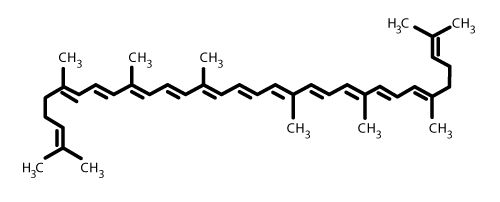
Figure 2. Lycopene structure formula modified by Nguyen and Schwarts in 1999 (source : researchgate.net).
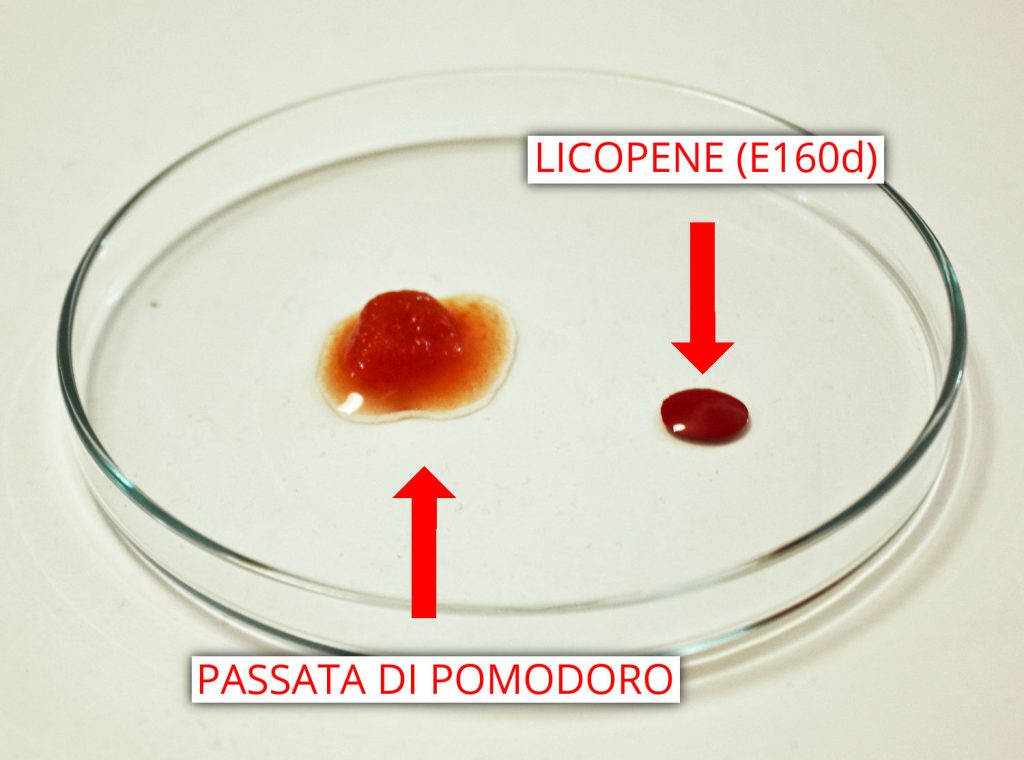
Figure 3. Lycopene is used in the food industry as a red dye (E160d).
Home » News » Food Processing » Fantastic lycopene, how much is there in the tomato puree?



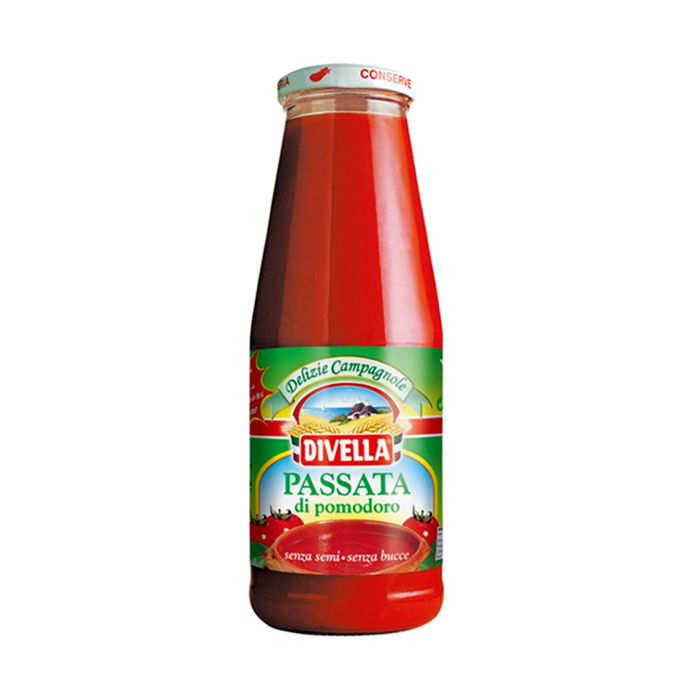
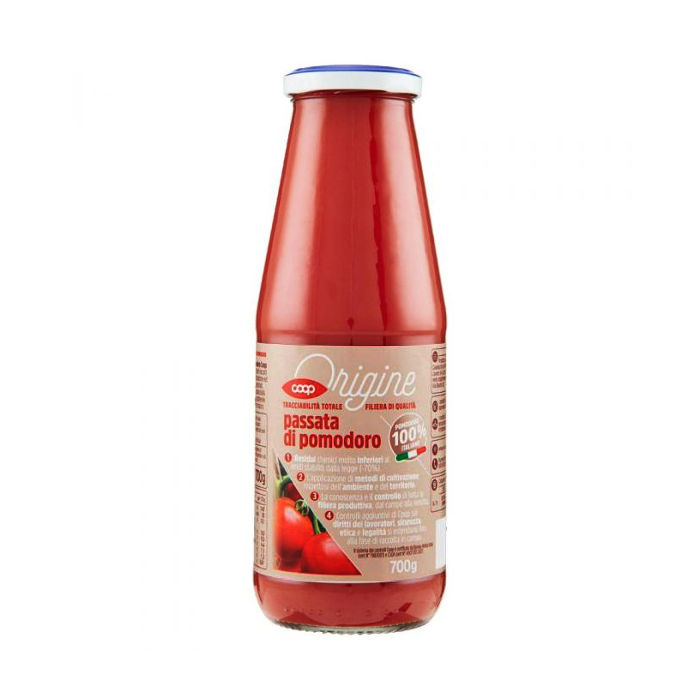
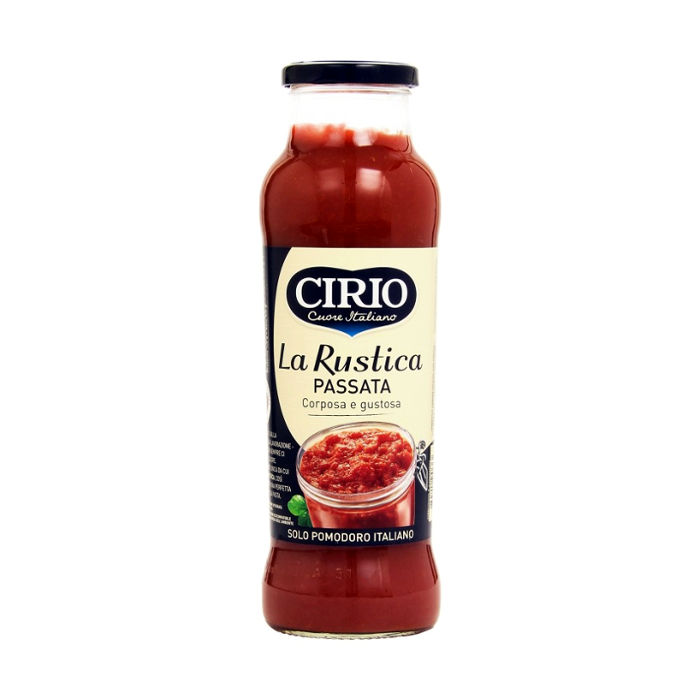
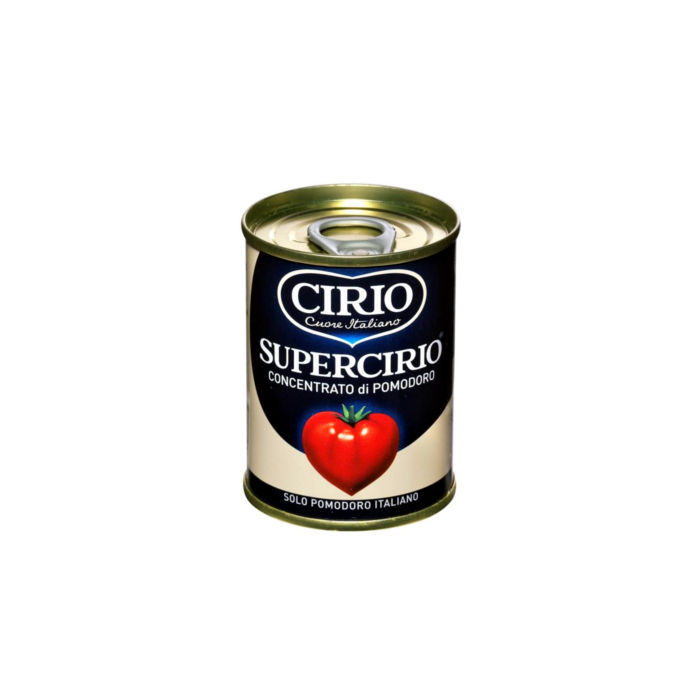
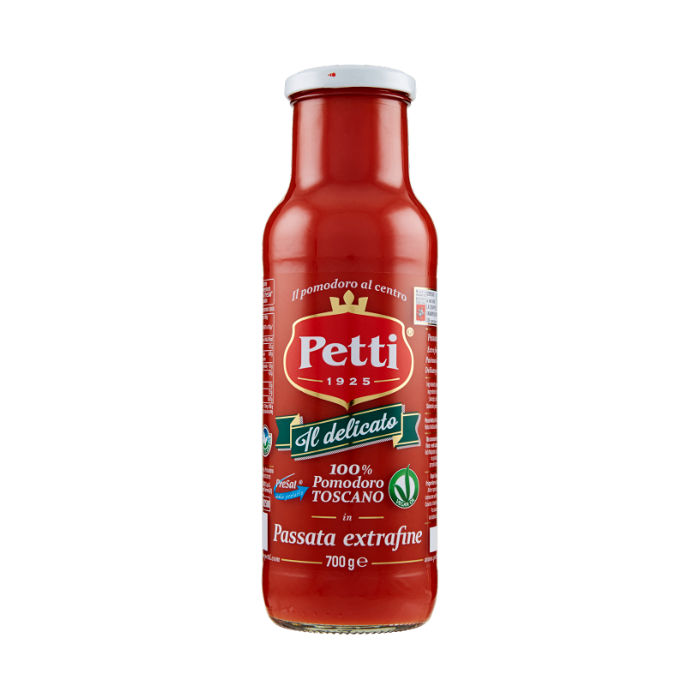
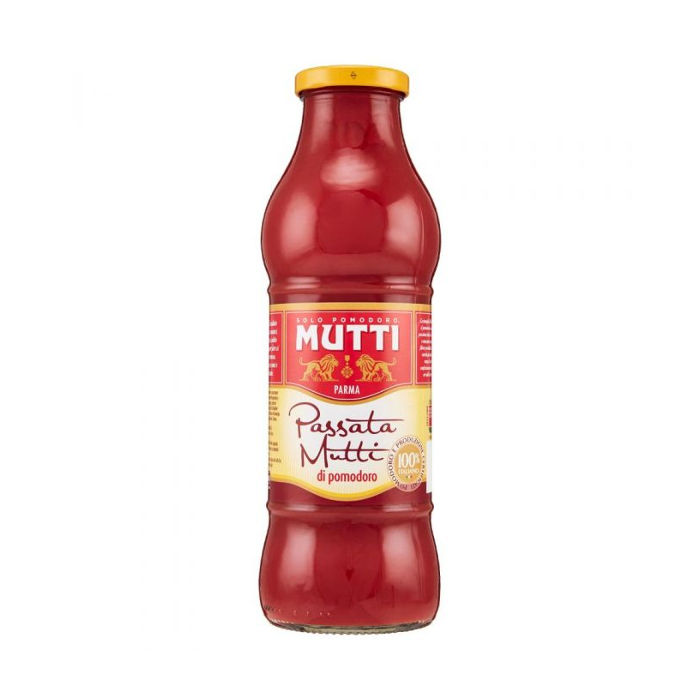
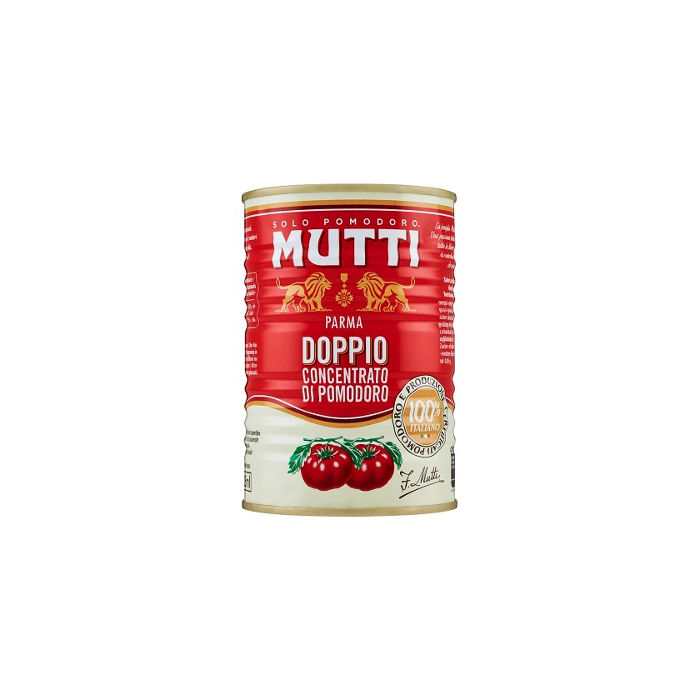
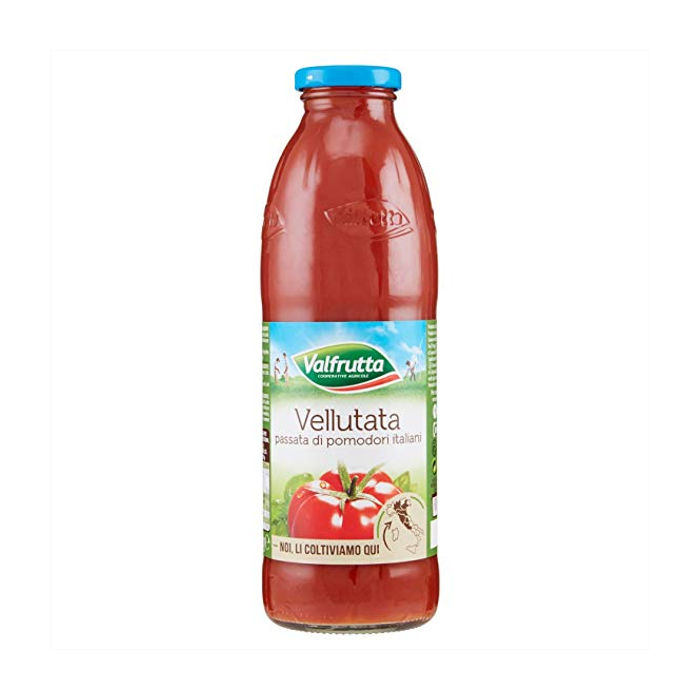
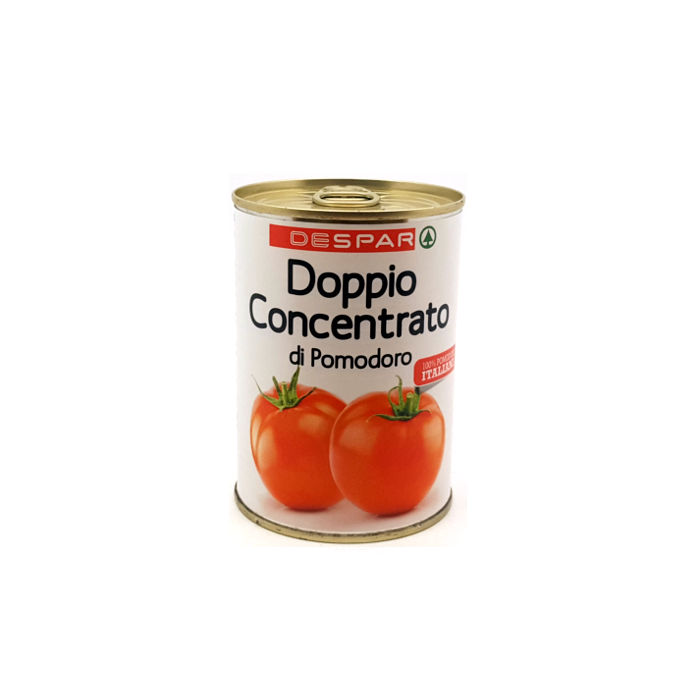
| Petti il delicato | Coop Origine | Divella passata | Mutti passata | Mutti doppio concentrato | Cirio la rustica | Supercirio concentrato | Valfrutta vellutata | Despar doppio concentrato | |
| Net weight | 500 g | 700 g | 680 g | 700 g | 140 g | 680 g | 140 g | 700 g | 400 g |
| Energy kJ (kcal) | 114 (27) | 147 (35) | 104 (25) | 149 (36) | 407 (96) | 135 (32) | 315 (74) | 125 (30) | 376 (89) |
| Fat | 0,2 g | 0,1 g | 0,1 g | 0,5 g | 0,2 g | 0,1 g | 0,3 g | 0,1 g | 0 g |
| – of which saturated | 0,0 g | 0,0 g | 0,0 g | 0,1 g | 0,1 g | 0,1 g | 0,1 g | 0,1 g | 0 g |
| Carbs | 4,3 g | 6,3 g | 4,0 g | 5,1 g | 17 g | 5,3 g | 12,7 g | 4,9 g | 14 g |
| – of which sugar | 4,3 g | 4,4 g | 4,0 g | 4,5 g | 14 g | 4,2 g | 9,5 g | 3,9 g | 14 g |
| Fibers | 1,0 g | 1,1 g | n.r. | n.r. | n.r. | 1,7 g | 3,0 g | 1,5 g | 5,1 g |
| Proteins | 1,5 g | 1,2 g | 1,4 g | 1,6 g | 4,2 g | 1,2 g | 3,0 g | 1,2 g | 5 g |
| Salt | 0,42 g | 0,61 g | 0,35 g | 0,5 g | 0,5 g | 0,02 g | 0,0 g | 0,38 g | 1,5 g |
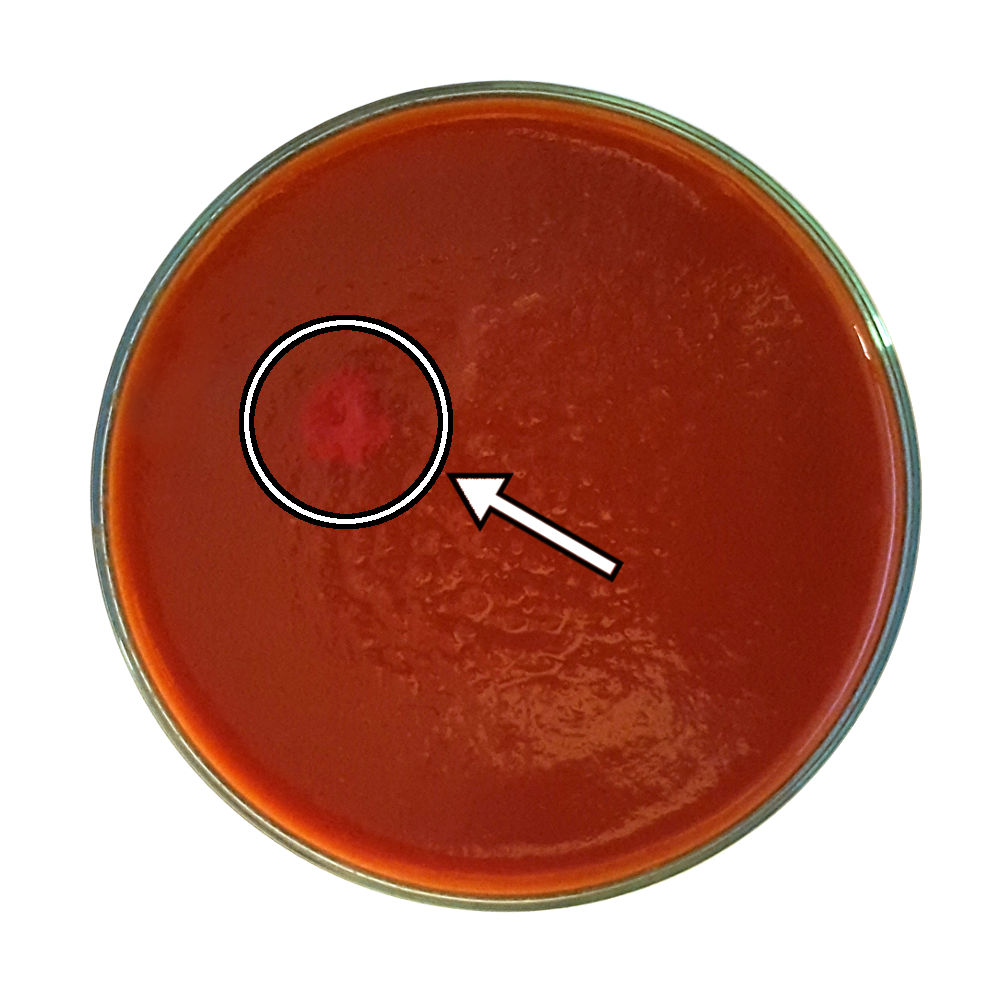
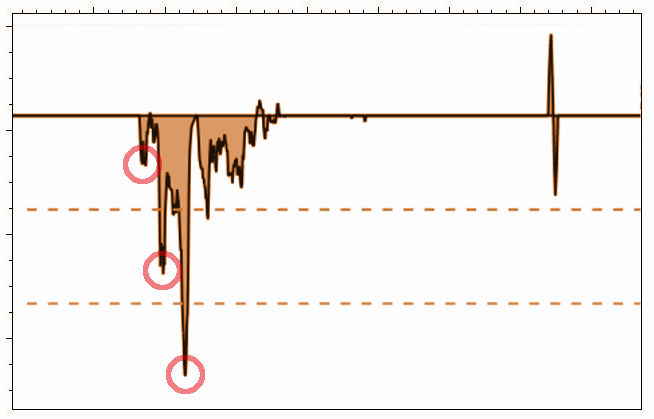
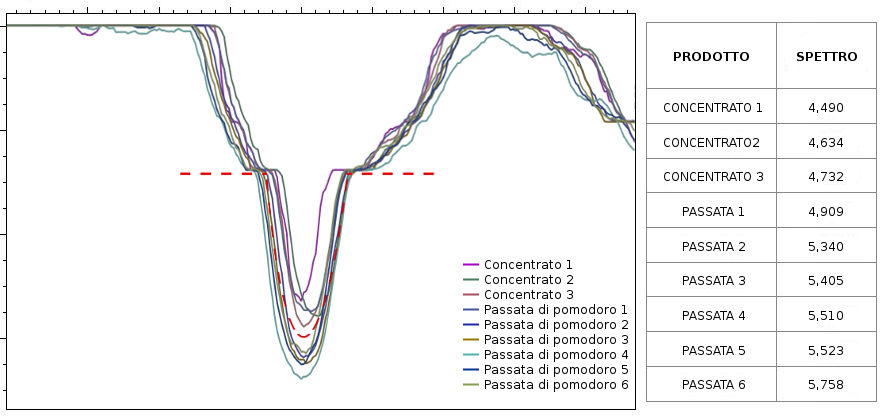
Caronte Consulting designs and manufactures hardware and software systems in the field of Industry 4.0, equipped with sophisticated and effective Artificial Intelligence.
Our devices are tailor-made to the customer’s needs and allow you to completely automate industrial processes, optimizing production and creating savings in raw materials and energy consumption.
[1] LaVecchia C. “Mediterranean epidemiological evidence on tomatoes and the prevention of digestive tract cancers”. Proc. Soc. Exp. Biol. Med. 1997; 218:125-128
[2] Giovannucci E. “Tomatoes, tomato-based products, lycopene and cancer: a review of the epidemiologic literature”. J. Natl. Cancer Inst. 1999; 91(4):317-31
[3] Dorai T. and Aggarwal B.B. “Role of chemopreventive agents in cancer therapy”. Cancer Lett. 2004; 215(2):129-40
[4] Fraser M.L., Lee A.H. and Binns C.W. “Lycopene and prostate cancer: emerging evidence”. Expert Rev. Anticancer Ther. 2005; 5(5):847-54
[5] Cook-Mozaffari P.J., Azordegan F., Day N.E., Ressicaud A., Sabai C. and Aramesh B. “Oesophageal cancer studies in the Caspian Littoral of Iran: results of a case-control study”. Br. J. Cancer. 1979; 39(3):293-309
[6] Tsugane S., Tsuda M., Gey F. and Watanabe S. “Cross-sectional study with multiple measurements of biological markers for assessing stomach cancer risks at the population level”. Environ Health Perspect. 1992; 98:207-10
[7] Burney P.G.J., Constock G.W. and Morris J.S. “Serologic precursors of cancer: serum micronutrients and the subsequent risk of pancreatic cancer”. Am. J. Clin. Nutr. 1989; 49(5):895-900
[8] Peng Y.M., Peng Y.S., Childers J.M., Hatch K.D., Roe D.J. and Lin P. “Concentrations of carotenoids, tocopherols and retinol in paired plasma and cervical tissue of patients with cervical cancer, precancer and noncancerous disease”. Cancer Epidemiol. Biomark. Prev. 1998; 7(4):347-350
[9] Kaliora A.C., Dedoussis G.V. and Schmidt H. “Dietary antioxidants in preventing atherogenesis”. Atherosclerosis. 2005; 187(1):1-17
[10] Visioli F., Riso P., Grande S., Galli C. and Porrini M. “Protective activity of tomato products on in vivo markers of lipid oxidation”. Eur. J. Nutr. 2003; 42(4):201-6
[11] Engelhard Y.N., Gazer B. and Paran E. “Natural antioxidants from tomato extract reduce blood pressure in patients with grade-1 hypertension: a double-blind, placebo-controlled pilot study”. Am. Heart J. 2006; 151(1):100
[12] Fuhrman B., Elis A. and Aviram M. “Hypocholesterolemic effect of lycopene and β-carotene is related to suppression of cholesterol syntesis and augmentation of LDL receptor activity in macrophages”. Biochem. Biophys. Res. Commun. 1997; 233(3):658-62
[13] Stahl W., Heinrich U., Aust O., Tronnier H. and Sies H. “Lycopene-rich products and dietary photoprotection”. Photochem. Photobiol. Sci. 2006; 5(2):238-42
[14] Andreassi M., Stanghellini E., Ettorre A., Di Stefano A. and Andreassi L. “Antioxidant activity of topically applied lycopene”. J. Eur. Acad. Dermatol. Venereol. 2004; 18(1):52-55
[15] Fazekas Z., Gao D., Saladi R.N., Lu Y., Lebwohl M. and Wei H. “Protective effects of lycopene against ultraviolet B-induced photodamage”. Nutr. Cancer. 2003; 47(2):181-7
[16] Helmut Sies, “Total Antioxidant Capacity: Appraisal of a Concept”, in The Journal of Nutrition, vol. 137, nº 6, 1º giugno 2007, pp. 1493–1495
[17] Phyllis Bowen, Longwen Chen e Maria Stacewicz-Sapuntzakis, “Tomato Sauce Supplementation and Prostate Cancer: Lycopene Accumulation and Modulation of Biomarkers of Carcinogenesis“, in Experimental Biology and Medicine, vol. 227, nº 10, 2002-11, pp. 886–893
[18] L. Chen, M. Stacewicz-Sapuntzakis e C. Duncan, “Oxidative DNA Damage in Prostate Cancer Patients Consuming Tomato Sauce-Based Entrees as a Whole-Food Intervention“, in JNCI Journal of the National Cancer Institute, vol. 93, nº 24, 19 dicembre 2001, pp. 1872–1879
[19] Marisa Porrini e Patrizia Riso, “Lymphocyte Lycopene Concentration and DNA Protection from Oxidative Damage Is Increased in Women after a Short Period of Tomato Consumption“, in The Journal of Nutrition, vol. 130, nº 2, 1º febbraio 2000, pp. 189–192
[20] Patrizia Riso, Andrew Pinder e Alessandra Santangelo, “Does tomato consumption effectively increase the resistance of lymphocyte DNA to oxidative damage?“, in The American Journal of Clinical Nutrition, vol. 69, nº 4, 1º aprile 1999, pp. 712–718
[21] Sanjiv Agarwal e A. Venketeshwer Rao, “Tomato lycopene and low density lipoprotein oxidation: A human dietary intervention study“, in Lipids, vol. 33, nº 10, 1998-10, pp. 981–984
[22] Achim Bub, Bernhard Watzl e Leo Abrahamse, “Moderate Intervention with Carotenoid-Rich Vegetable Products Reduces Lipid Peroxidation in Men“, in The Journal of Nutrition, vol. 130, nº 9, 1º settembre 2000, pp. 2200–2206
[23] John W. Erdman, Nikki A. Ford e Brian L. Lindshield, “Are the health attributes of lycopene related to its antioxidant function?”, in Archives of Biochemistry and Biophysics, vol. 483, nº 2, 2009-03, pp. 229–235
[24] Kim L., Rao A.V. and Rao L.G. “Lycopene II—effect on osteoblasts: the carotenoid lycopene stimulates cell proliferation and alkaline phosphatase activity of SaOS-2 cells”. J. Med. Food. 2003; 6(2):79-86
[25] Rao L.G., Krishnadev N., Banasikowska K. and Rao A.V. “Lycopene I—effect on osteoclasts: lycopene inhibits basal and parathyroid hormone-stimulated osteoclast formation and mineral resorption mediated by reactive oxygen species in rat bone marrow cultures”. J. Med. Food. 2003; 6(2):69-78
[26] Rao LG., Guns E. and Rao AV. “Lycopene: its role in human health and disease”. AGROFood industry hi-tech. July/August2003. ISSN: 1120-6012
[27] Rao A.V. and Balachandran B. “Role of oxidative stress and antioxidants in neurodegenerative diseases”. Nutr. Neurosci. 2002; 5(5):291-309
[28] Schmidt R., Fazekas F., Hayn M., Schmidt H., Kapeller P., Toob G., Offenbacher H., Schumacher M., Heber B., Weinrauch V., Kostner G.M. and Esterbauer H. “Risk factors for microangiopathy-related cerebral damage in the Austrian stroke prevention study”. J. Neurol. Sci. 1997; 152(1):15-21
[29] Polidori M.C. and Mecocci P. “Plasma susceptibility to free radical-induced antioxidant consumption and lipid peroxidation is increased in very old subjects with Alzheimer disease”. J. Alzheimers Dis. 2002; 4(6):517-22
[30] Cardinault N., Abalain J.H., Sairafi B., Coudray C., Grolier P., Rambeau M., Carre J.L., Mazur A. and Rock E. “Lycopene but not lutein nor zeaxanthin decreases in serum and lipoproteins in agerelated macular degeneration patients”. Clin. Chim. Acta. 2005; 357(1):34-42
[31] Liana Maria Alda, I. Gogoaşă, Despina-Maria Bordean, I. Gergen, S.Alda, Camelia Moldovan, L. Niţă, Lycopene content of tomatoes and tomato products, Journal of Agroalimentary Processes and Technologies 2009, 15 (4), 540-542
.